
The Heartbeat of the Twin Cities: Downtown Minneapolis
Discover Downtown Minneapolis: A bustling hub of culture, history, and entertainment in the heart of the Twin Cities, perfect for art lovers, foodies, and sports enthusiasts.
Downtown Minneapolis is the vibrant core of the Twin Cities, offering a dynamic mix of business, culture, and entertainment. This bustling neighborhood is renowned for its impressive skyline, featuring iconic structures such as the IDS Center and the Foshay Tower, which speak to the city’s rich architectural heritage. During the day, the area buzzes with activity as professionals fill the streets, while at night, it transforms into a lively hub with vibrant nightlife. Art enthusiasts will be drawn to the Walker Art Center and the Minneapolis Sculpture Garden, home to the famous Spoonbridge and Cherry sculpture. For those interested in history, the Mill City Museum offers a fascinating glimpse into the city's flour milling past. The Mississippi Riverfront provides picturesque views and a perfect backdrop for leisurely walks or bike rides along the Stone Arch Bridge. Shopping and dining are major highlights of Downtown Minneapolis. Nicollet Mall is a pedestrian-friendly shopping district, lined with boutiques, restaurants, and cafés. Food lovers can explore a wide array of dining options, from upscale eateries to food trucks offering diverse cuisines. Sports fans will find their haven in the Target Center and U.S. Bank Stadium, home to the Minnesota Timberwolves and the Minnesota Vikings, respectively. Whether you're visiting for business or leisure, Downtown Minneapolis offers something for everyone, making it an unmissable destination in the heart of Minnesota.
Local tips in Downtown Minneapolis
- Visit the Minneapolis Sculpture Garden early in the morning to avoid crowds and get the best photos.
- Check out the Skyway System, an extensive network of enclosed walkways that connect buildings, perfect for exploring the city comfortably in any weather.
- Consider using the Metro Transit light rail for convenient and cost-effective travel around the city.
- If you’re a sports fan, check the schedules for events at Target Center and U.S. Bank Stadium to catch a game.
- Take a guided tour of the Mill City Museum to fully appreciate the history and impact of the city’s milling industry.
The Heartbeat of the Twin Cities: Downtown Minneapolis
Downtown Minneapolis is the vibrant core of the Twin Cities, offering a dynamic mix of business, culture, and entertainment. This bustling neighborhood is renowned for its impressive skyline, featuring iconic structures such as the IDS Center and the Foshay Tower, which speak to the city’s rich architectural heritage. During the day, the area buzzes with activity as professionals fill the streets, while at night, it transforms into a lively hub with vibrant nightlife. Art enthusiasts will be drawn to the Walker Art Center and the Minneapolis Sculpture Garden, home to the famous Spoonbridge and Cherry sculpture. For those interested in history, the Mill City Museum offers a fascinating glimpse into the city's flour milling past. The Mississippi Riverfront provides picturesque views and a perfect backdrop for leisurely walks or bike rides along the Stone Arch Bridge. Shopping and dining are major highlights of Downtown Minneapolis. Nicollet Mall is a pedestrian-friendly shopping district, lined with boutiques, restaurants, and cafés. Food lovers can explore a wide array of dining options, from upscale eateries to food trucks offering diverse cuisines. Sports fans will find their haven in the Target Center and U.S. Bank Stadium, home to the Minnesota Timberwolves and the Minnesota Vikings, respectively. Whether you're visiting for business or leisure, Downtown Minneapolis offers something for everyone, making it an unmissable destination in the heart of Minnesota.
Iconic landmarks you can’t miss
Minneapolis Sculpture Garden
Discover the Minneapolis Sculpture Garden, where art meets nature in a stunning urban landscape filled with iconic sculptures and beautiful gardens.

Stone Arch Bridge
Discover the historic Stone Arch Bridge in Minneapolis, a picturesque pedestrian pathway offering breathtaking views of the Mississippi River and city skyline.
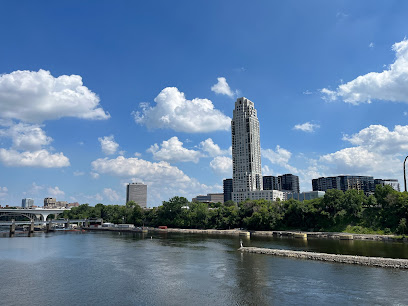
Mill City Museum
Explore the rich heritage of Minneapolis at Mill City Museum, where history, innovation, and scenic beauty converge along the Mississippi River.
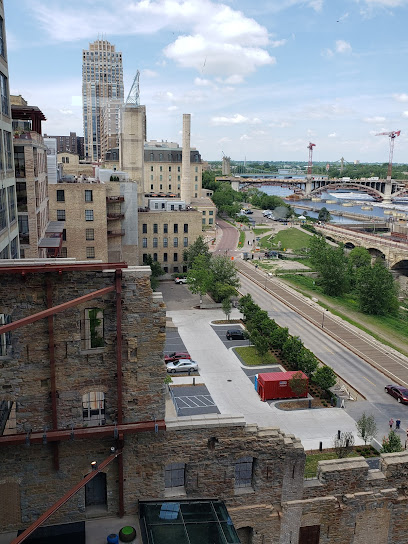
Spoonbridge and Cherry
Discover the whimsical Spoonbridge and Cherry in Minneapolis, a captivating sculpture and a symbol of the city's vibrant art scene.

Gold Medal Park
Experience the natural beauty and artistic charm of Gold Medal Park in Minneapolis, a serene urban oasis perfect for relaxation and exploration.

Foshay Museum and Observation Deck
Discover the rich history and breathtaking views of Minneapolis at the Foshay Museum and Observation Deck, a must-see tourist attraction.

Mary Tyler Moore Statue
Discover the iconic Mary Tyler Moore Statue in downtown Minneapolis, a tribute to the beloved actress and a symbol of optimism and independence.

Bob Dylan Mural
Discover the Bob Dylan Mural in Minneapolis, a vibrant tribute to the legendary musician's legacy and an artistic gem in the city’s cultural landscape.
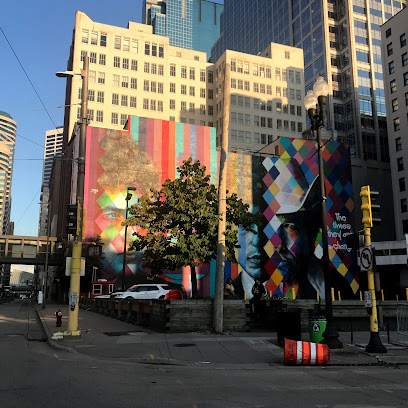
Milwaukee Avenue Historic District
Discover the charm and history of Milwaukee Avenue Historic District, a beautifully preserved 19th-century neighborhood in Minneapolis, MN.

Ard Godfrey House
Discover the historic Ard Godfrey House on Nicollet Island, where architecture meets history in a charming riverside setting.

Unmissable attractions to see
Mill Ruins Park
Explore the historic beauty of Mill Ruins Park in Minneapolis, where rich history meets scenic landscapes along the picturesque Mississippi River.

Foshay Museum and Observation Deck
Discover the rich history and breathtaking views of Minneapolis at the Foshay Museum and Observation Deck, a must-visit tourist attraction.

Music Wall
Explore the Music Wall in Minneapolis - a vibrant homage to the city's rich musical history with stunning art and cultural significance.

Essential places to dine
Hell's Kitchen Inc.
Discover Hell's Kitchen Inc., where American cuisine meets vibrant ambiance in the heart of Minneapolis.

Spoon and Stable
Experience modern American cuisine at Spoon and Stable in Minneapolis—where seasonal ingredients meet innovative culinary artistry.

The News Room
Experience the heart of Minneapolis at The News Room - where classic American cuisine meets vibrant nightlife in a charming setting.

The Melting Pot
Experience the art of fondue at The Melting Pot in Minneapolis - where fine dining meets interactive culinary delight.

The Capital Grille
Experience unparalleled fine dining at The Capital Grille in Minneapolis, featuring exquisite steaks, fresh seafood, and an extensive wine selection.

112 Eatery
Experience exquisite New American cuisine with Vietnamese flair at 112 Eatery in Minneapolis' Warehouse District.

The Butcher's Tale
Experience fine dining at The Butcher's Tale in Minneapolis - where expertly crafted steaks meet a warm ambiance.

Fhima's Minneapolis
Experience exquisite French and Moroccan cuisine at Fhima's Minneapolis, where culinary artistry meets warm hospitality.

Mara Restaurant and Bar
Experience exquisite Mediterranean cuisine at Mara Restaurant and Bar in Minneapolis – where every meal is a celebration of flavor.

Lumi Restaurant
Discover authentic Mediterranean flavors at Lumi Restaurant in Minneapolis - where every dish tells a story.

Markets, malls and hidden boutiques
Nicollet Mall
Explore Nicollet Mall, Minneapolis' premier shopping and pedestrian zone, blending modern retail with vibrant local culture in a stunning urban setting.

City Center
Discover shopping, dining, and entertainment at City Center, Minneapolis' vibrant shopping mall in the heart of the city.
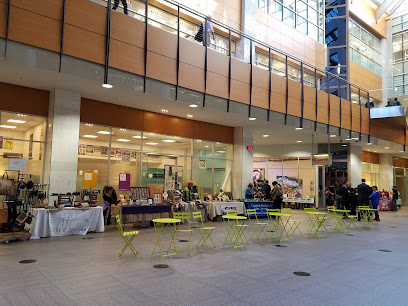
Gaviidae Common
Explore the vibrant Gaviidae Common in Minneapolis, a shopping haven with diverse retail and dining experiences in a lively atmosphere.

I Like You
Explore I Like You Gift Shop in Northeast Minneapolis, where unique finds and local artistry come together for the perfect gift experience.

I Love Minnesota
Discover unique Minnesota souvenirs at I Love Minnesota – a gift shop that captures the spirit of the North Star State in every item.

Time Bomb Vintage
Discover Time Bomb Vintage in Minneapolis - a unique antique store filled with vintage clothing and collectibles that tell a story.
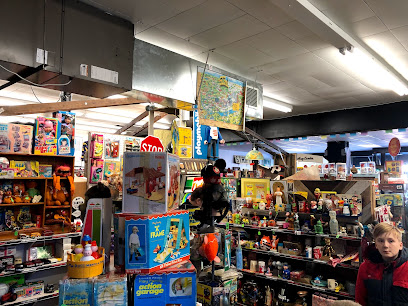
The Foundry Home Goods
Explore The Foundry Home Goods in Minneapolis for a unique selection of home décor and gifts reflecting modern design and local craftsmanship.

14 Hill gift shop
Explore 14 Hill Gift Shop in Minneapolis for unique gifts and local crafts that capture the essence of the city.

Parc Shop
Explore Parc Shop in Minneapolis for unique, quality women's clothing that showcases the latest trends in a welcoming atmosphere.

Statement Boutique
Explore Statement Boutique in Minneapolis for unique gifts, trendy fashion accessories, and exquisite jewelry in a charming atmosphere.

Essential bars & hidden hideouts
Hell's Kitchen Inc.
Discover the unique flavors of American cuisine at Hell's Kitchen Inc., a vibrant restaurant in the heart of Minneapolis, Minnesota.
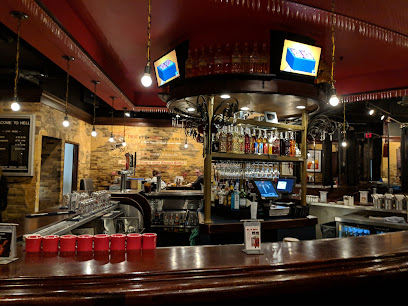
Brit's Pub
Discover the authentic British pub experience at Brit's Pub in Minneapolis, featuring delicious food, craft beers, and a vibrant atmosphere.

Tom's Watch Bar - Minneapolis
Discover the ultimate sports bar experience at Tom's Watch Bar in Minneapolis, where great food meets live sports action.

The Local - Minneapolis
Experience the vibrant flavors of The Local in Minneapolis, where American and Irish cuisine meet in a lively atmosphere.

Union Rooftop
Discover Union Rooftop, Minneapolis: Where American cuisine meets vibrant rooftop views for an unforgettable dining experience.

Sneaky Pete's
Discover the vibrant atmosphere of Sneaky Pete's, Minneapolis's premier grill and sports bar, where delicious food meets the excitement of live sports.

Prohibition Bar
Discover Minneapolis' Prohibition Bar, where luxury cocktails meet stunning skyline views in a chic speakeasy atmosphere.

Last Call Party Bar
Discover the vibrant nightlife at Last Call Party Bar, where delicious grill cuisine meets an exhilarating dance atmosphere in Minneapolis.

Upstairs Circus MPLS
Discover a unique bar experience at Upstairs Circus MPLS, where cocktails meet creativity in a vibrant atmosphere.

Living Room
Discover the charm of Living Room Lounge in Minneapolis, where expertly crafted cocktails and a cozy ambiance create unforgettable experiences.

Local Phrases
-
- HelloHey there
[Hey thair] - GoodbyeSee ya
[See yah] - YesYeah
[Yeh] - NoNope
[Nohp] - Please/You're welcomeSure thing
[Shur thing] - Thank youThanks
[Thaynks] - Excuse me/SorryPardon me
[Pahr-dn me] - How are you?How's it going?
[Hows it go-ing] - Fine. And you?Good. You?
[Gud. Yoo?] - Do you speak English?You speak English?
[Yoo speak Ing-lish?] - I don't understandI don't get it
[I dont get it]
- HelloHey there
-
- I'd like to see the menu, pleaseCan I see the menu?
[Can I see the menu?] - I don't eat meatI'm vegetarian
[I'm ve-ji-te-ree-an] - Cheers!Cheers!
[Cheers!] - I would like to pay, pleaseCheck, please
[Check, please]
- I'd like to see the menu, pleaseCan I see the menu?
-
- Help!Help!
[Help!] - Go away!Leave me alone!
[Leave me alone!] - Call the Police!Call the cops!
[Call the cops!] - Call a doctor!Get a doctor!
[Get a doctor!] - I'm lostI'm lost
[I'm lost] - I'm illI'm sick
[I'm sick]
- Help!Help!
-
- I'd like to buy...I wanna buy...
[I wanna buy...] - I'm just lookingJust browsing
[Just brow-zing] - How much is it?How much?
[How much?] - That's too expensiveToo pricey
[Too prye-see] - Can you lower the price?Can you drop the price?
[Can you drop the price?]
- I'd like to buy...I wanna buy...
-
- What time is it?What's the time?
[Whats the time?] - It's one o'clockIt's one
[Its one] - Half past (10)Ten thirty
[Ten thur-tee] - MorningMorning
[Morning] - AfternoonAfternoon
[Afternoon] - EveningEvening
[Evening] - YesterdayYesterday
[Yesterday] - TodayToday
[Today] - TomorrowTomorrow
[Tomorrow] - 1One
[Wun] - 2Two
[Too] - 3Three
[Three] - 4Four
[Four] - 5Five
[Fyev] - 6Six
[Six] - 7Seven
[Sev-en] - 8Eight
[Ayt] - 9Nine
[Nine] - 10Ten
[Ten]
- What time is it?What's the time?
-
- Where's a/the...?Where's the...?
[Wheres the...?] - What's the address?What's the address?
[Whats the address?] - Can you show me (on the map)?Can you point it out (on the map)?
[Can you point it out (on the map)?] - When's the next (bus)?When's the next bus?
[Whens the next bus?] - A ticket (to ....)One ticket (to ....)
[Wun ticket (to ....)]
- Where's a/the...?Where's the...?
History of Downtown Minneapolis
-
Before European settlement, the area now known as Downtown Minneapolis was inhabited by the Dakota Sioux people. Their deep connection to the land and the Mississippi River shaped the region's early culture and trade practices. The name 'Minneapolis' itself is derived from the Dakota word 'Mni' meaning water, reflecting the significance of the river to both Indigenous peoples and later settlers.
-
In the late 19th century, the water power from the Mississippi River enabled Minneapolis to become the leading flour milling center in the United States. The Washburn-Crosby Company, which later became General Mills, was established during this time. The iconic Stone Arch Bridge, constructed in 1883, served as a vital link for transporting grain and remains a symbol of the city’s industrial heritage.
-
The early 20th century marked a period of rapid urbanization and growth in Downtown Minneapolis. Skyscrapers began to rise as the city became a hub for trade, finance, and manufacturing. Notable buildings like the Foshay Tower, completed in 1929, exemplify the architectural ambitions of the era and reflect the city's economic prosperity.
-
In the later half of the 20th century, Downtown Minneapolis experienced a cultural renaissance. The establishment of institutions such as the Walker Art Center and the Guthrie Theater transformed the area into a vibrant arts district. This period saw an influx of artists and performers, contributing to the rich cultural tapestry of the city and making it a destination for the arts.
-
The 21st century has seen significant revitalization efforts in Downtown Minneapolis. The introduction of mixed-use developments, public art projects, and the expansion of the light rail system have transformed the urban landscape. Notable projects like the U.S. Bank Stadium, which hosted the Super Bowl in 2018, have further established Downtown Minneapolis as a dynamic urban center.
Downtown Minneapolis Essentials
-
Downtown Minneapolis is easily accessible from other neighborhoods and cities. If you're coming from the Minneapolis-St. Paul International Airport, you can take the Light Rail Blue Line directly to Downtown, which takes about 30 minutes. Public buses also connect to various neighborhoods, with routes frequently running throughout the day. Additionally, rideshare services like Uber and Lyft are widely available, providing a convenient option for direct transportation.
-
Downtown Minneapolis is well-connected by public transportation. The Metro Transit Light Rail and several bus routes service the area, making it easy to explore. The Light Rail has two lines, the Blue and Green Lines, that intersect in Downtown. Bicycles are also a popular way to get around, with numerous bike lanes and bike-sharing programs available. Walking is a great option, as many attractions are within a reasonable distance.
-
Downtown Minneapolis is generally safe for tourists, but visitors should remain vigilant. While the majority of the area is safe, avoid walking alone at night in certain parts of North Loop and areas around the outskirts of Downtown, as these neighborhoods have higher crime rates. Always keep personal belongings secure and be cautious in crowded places.
-
In case of an emergency, dial 911 for police, fire, or medical assistance. The Hennepin County Medical Center is the primary hospital in Downtown Minneapolis. Familiarize yourself with the locations of nearby hospitals and police stations. It’s wise to have travel insurance that covers medical emergencies, and carry essential medications with you.
-
Fashion: Do dress appropriately for the weather, as winters can be harsh. Don’t wear overly casual clothing when dining out. Religion: Do respect local customs and be mindful in religious spaces. Public Transport: Do give up your seat for elderly passengers and allow others to exit before you board. Don’t eat or drink on public transit. Greetings: Do greet with a smile or a nod; a firm handshake is common in professional settings. Eating & Drinking: Do try local specialties at restaurants, and don’t refuse offers of food as it may be considered impolite.
-
To experience Downtown Minneapolis like a local, visit the Minneapolis Farmers Market for fresh produce and local goods. Take a stroll around Nicollet Mall, where you can find art installations, shops, and outdoor cafes. Consider attending a local event or concert at the Target Center or the Orpheum Theatre. Engaging with the local community by visiting neighborhood events can provide a deeper understanding of the city's culture.
Nearby Cities to Downtown Minneapolis
-
Things To Do in Saint Paul
-
Things To Do in Saint Cloud
-
Things To Do in Mankato
-
Things To Do in Eau Claire
-
Things To Do in Winona
-
Things To Do in Mason City
-
Things To Do in La Crosse
-
Things To Do in Duluth
-
Things To Do in Fort Dodge
-
Things To Do in Waterloo
-
Things To Do in Wausau
-
Things To Do in Brookings
-
Things To Do in Wahpeton
-
Things To Do in Watertown
-
Things To Do in Wisconsin Dells













